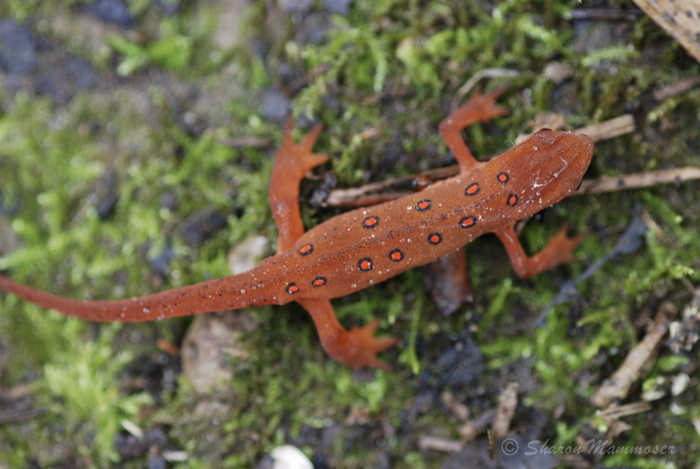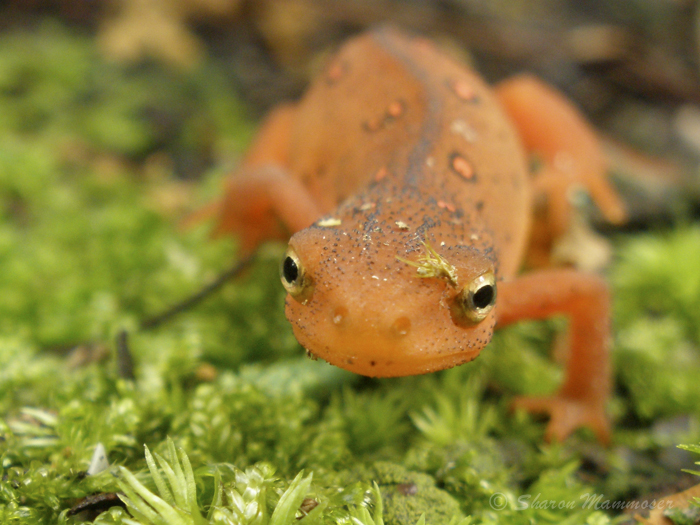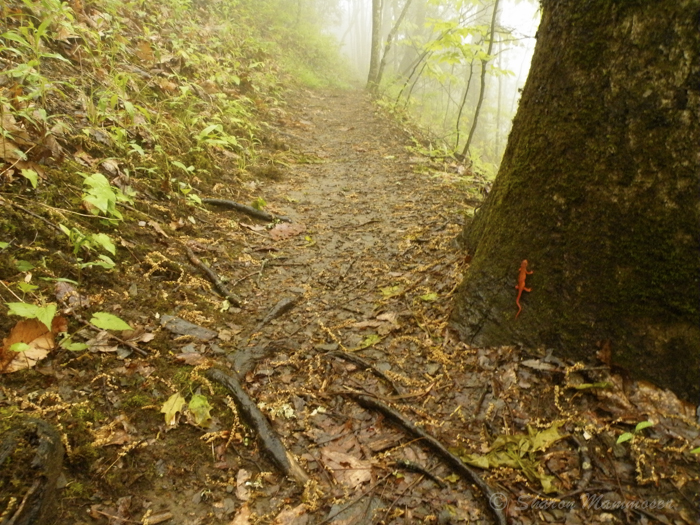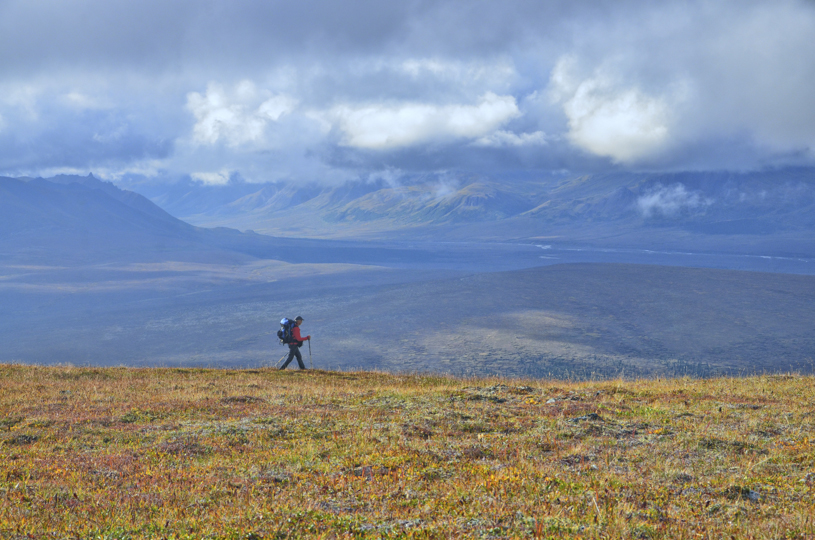 Last week my two nieces and nephew were here visiting from Colorado and though we did a lot of fun things during their visit, at least for one of them, I think the best time was had here in our own yard, at the pond and stream in front of the house. We explored with nets, looking in the mud and leaves for all kinds of critters. The one we found most was a salamander, including a red-spotted newt–and this week’s Creature Feature.
Last week my two nieces and nephew were here visiting from Colorado and though we did a lot of fun things during their visit, at least for one of them, I think the best time was had here in our own yard, at the pond and stream in front of the house. We explored with nets, looking in the mud and leaves for all kinds of critters. The one we found most was a salamander, including a red-spotted newt–and this week’s Creature Feature.
Here are some things you may not know about this handsome salamander:
1. Like all salamanders, red-spotted newts are amphibians. Amphibians are characterized as having an aquatic gill breathing larval stage (often called tadpoles or pollywogs) which is followed by a terrestrial lung-breathing adult stage. To the confusion of my niece Cassidy and likely many others, lizards and salamanders are not the same thing. Lizards are reptiles and salamanders are amphibians. Both have backbones but lizards have dry, scaly skin rather than the slimy or moist skin of salamanders.
 2. Red-spotted newts, like most salamanders, begin life in a pond, as eggs. They will hatch into gill-breathing larvae in 3-5 weeks depending on the temperature of the water. The warmer it is the quicker they will hatch.
2. Red-spotted newts, like most salamanders, begin life in a pond, as eggs. They will hatch into gill-breathing larvae in 3-5 weeks depending on the temperature of the water. The warmer it is the quicker they will hatch.
3. Red-spotted newts, unlike most other salamanders, go through four, not three stages of life. They start as an egg, become aquatic larvae, then spend time on land breathing through lungs, then return to the water for their adult stage of life.
 4. When Red-spotted newts are in their terrestrial stage, they turn bright orange and are referred to as red efts. This is sometimes called their “teenager” stage, as they aren’t larvae but neither are they adults. Their bright orange color warns predators of their toxic skin. As a result, predators avoid them, in both the adult and “teenage” stages. They remain in this stage for 1-7 years after which they become adults and return to the water. Some populations may skip this stage.
4. When Red-spotted newts are in their terrestrial stage, they turn bright orange and are referred to as red efts. This is sometimes called their “teenager” stage, as they aren’t larvae but neither are they adults. Their bright orange color warns predators of their toxic skin. As a result, predators avoid them, in both the adult and “teenage” stages. They remain in this stage for 1-7 years after which they become adults and return to the water. Some populations may skip this stage.
 5. Red efts often emerge from beneath leaf litter or logs in the forest on rainy days. When I was thru-hiking the Appalachian Trail, there were several rainy days when I was traveling through New York state when I counted more than 100 in several hours of walking! I like to think of this when it is rainy and I hear people complaining about the “lousy” or “dreary” weather–that is, think of how happy you’d be if you were a salamander and it was a rainy day. Rainy days have their own unique beauty.
5. Red efts often emerge from beneath leaf litter or logs in the forest on rainy days. When I was thru-hiking the Appalachian Trail, there were several rainy days when I was traveling through New York state when I counted more than 100 in several hours of walking! I like to think of this when it is rainy and I hear people complaining about the “lousy” or “dreary” weather–that is, think of how happy you’d be if you were a salamander and it was a rainy day. Rainy days have their own unique beauty.
6. Red-spotted newts are carnivorous. The aquatic larvae eat invertebrates and aquatic insect larvae and the adults and “teenagers” eat insects, snails, worms, mites, spiders and other invertebrates.
7. Red-spotted newts can be found throughout eastern North America.
8. Females deposit up to 400 eggs in permanent bodies of water like ponds and lakes. They attach these singly to submerged vegetation.
9. The lifespan of a red-spotted newt is 12-15 years.
10. Adult red-spotted newts return to the pond and live there as adults for the remainder of their lives. As adults they are a greenish olive color on top and a yellowish color on their bellies. They are dotted with black spots. They may leave the pond temporarily if it dries up or if leeches are present.
References:


1 thought on “What Salamander Turns Bright Orange as a Teenager?”
Comments are closed.